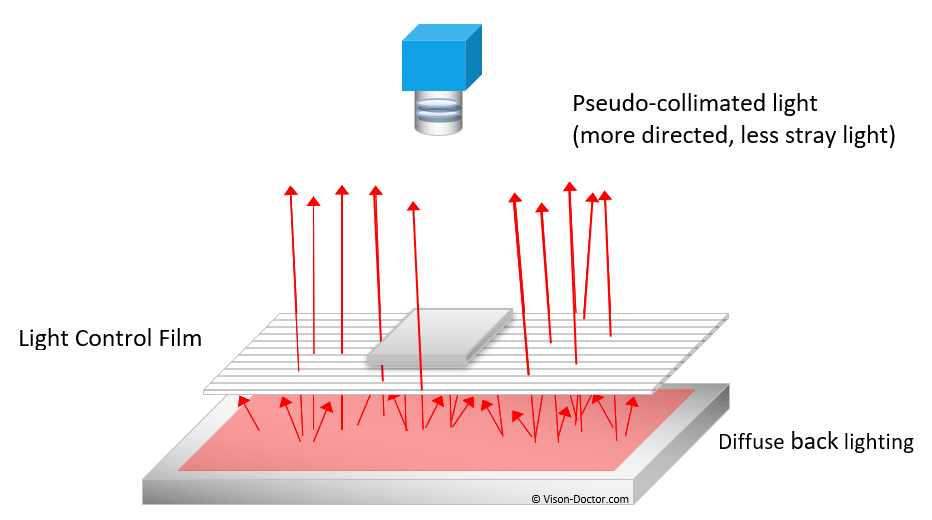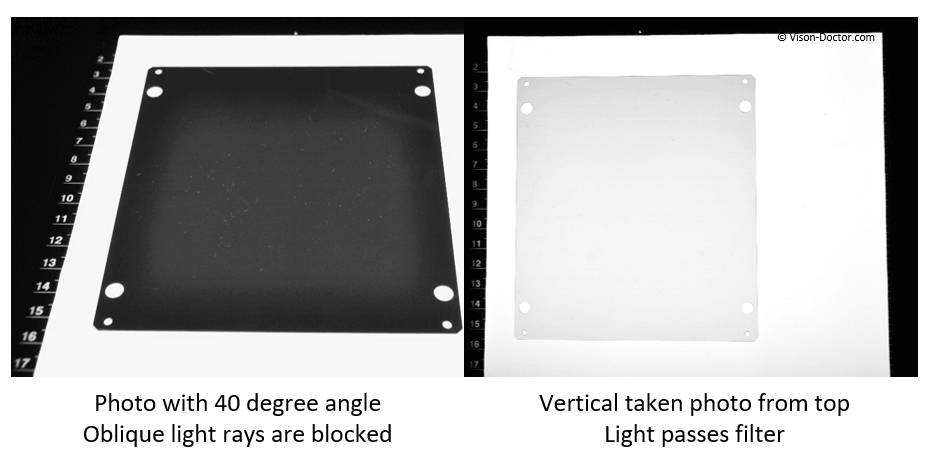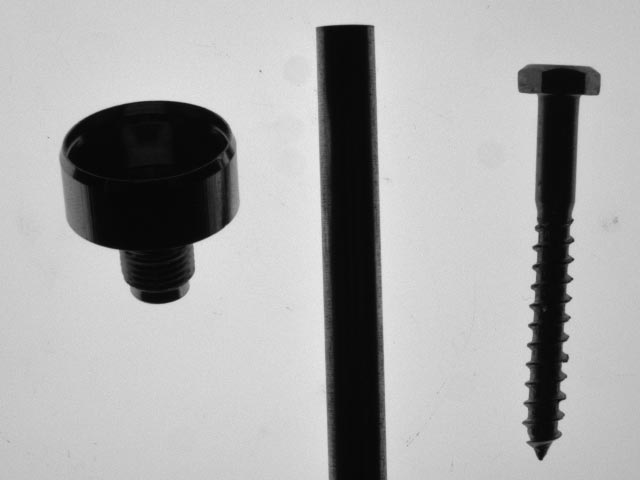Light control film
The requirements for transmitted light illumination are a homogeneously illuminated image and at the same time light aligned as parallel as possible.
As an LED background light is only loosely equipped with LEDs or a fluorescent background light only with a few tubes, the light must be spread softly over the whole area by means of diffusors. Now the homogeneity of light over the surface is granted, but the object edges can be illuminated at angles by stray light. The consequence is partial shade (soft grey transitions) between bright illumination and the silhouette of the object. The result is a measuring inaccuracy: the lower the contrast, the worse the measuring result or finding the object (however, please do not overexpose for "maximum" contrast!).
Remedy by means of light control film
- Due to microstructures in transparent filter glass, stray light is blocked, the effect on the image is similar to telecentric background lighting (there, however, the light is optically aligned by 100%).
- No blurring of grey shade information over several pixels. Interfering reflexes and reflections are suppressed, partial shade is avoided.
- The consequence is a better contrast on the edges, particularly in case of glossy, cylindrical objects.
Normal backlight
With light control film
Functional principle of light control films
 |
The effect of the filter can be demonstrated by taking the transmitted lights at angles. As mainly vertical rays are passed through the filter, no light can reach the camera at angles: the filter appears almost black:
 |
Important for machine vision
- In case of especially small imaging areas it is beneficial to place the lighting in the unsharpness range, as "micro-cracks" would otherwise be visible in the filter material. A distance of several centimetres between lighting and test object solves this problem.
- The micro-structures in the filter are aligned in only one direction. For optimal results align the longitudinal edge of the component parallel to the filter structures. The stray light blocking is much lower in the other direction.
- As the stray light does not contribute to the illumination, the image will be approximately 30 - 40 per cent darker. This must be compensated by longer exposure times, a different aperture position or brighter illumination.
- If the object must have a perfect silhouette in transmitted light in any direction, only telecentric background lighting can be used. It does not filter the stray light, but perfectly aligns it (collimation).









